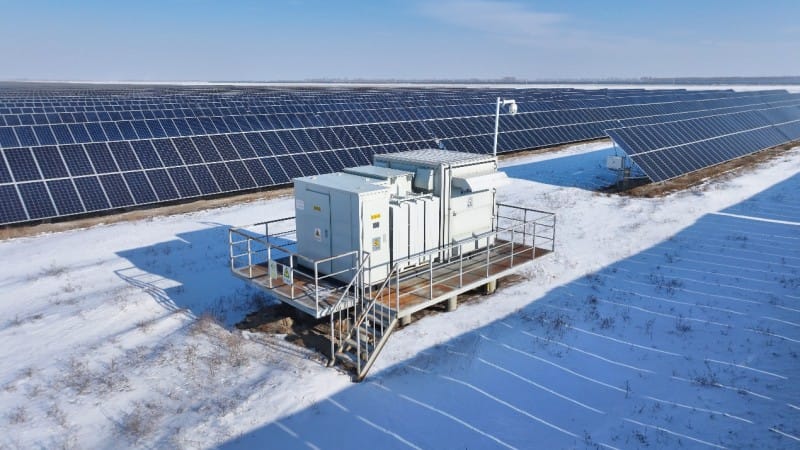Recently, the photovoltaic industry has been quite “divided”.
In our article “Has the photovoltaic industry hit the bottom?” on September 2, we proposed two levels of the photovoltaic industry’s bottoming out, namely the performance bottom and the valuation bottom, and analyzed the logic of the bottoming out sequence.
Three months have passed, and the photovoltaic industry is quite lively. In the industry’s cold winter, the capital market has a warm current in the systemic opportunities. The alternation of cold and warm, the interweaving of reality and expectations, and the mixed feelings.
01
The “coldness” of the industry
The “coldness” of photovoltaics is directly reflected in performance.
In the third quarter reports of listed companies in the photovoltaic industry, most of the giants suffered losses as expected, which is not surprising, so I will not name them one by one here.
Of course, just as the performance expectations in “Has photovoltaic bottomed out?”, the performance of the photovoltaic industry is far from bottoming out. It will at least not be until the annual report season in March and April next year, and combined with the data of the first quarter report next year, and the order of bottoming out in each link is also different.
Therefore, everyone is mentally prepared for the reality of losses in the third quarter report and the loss expectations in the subsequent annual report. It is nothing more than whether the loss margin and loss range exceed expectations.
In addition to financial performance, the photovoltaic industry’s capital chain continues to be tight, and there are constant voices of capacity clearance, staff reductions, and mergers and acquisitions.
During this period, the photovoltaic industry is also saving itself.
On October 18, the China Photovoltaic Industry Association, in accordance with the high-level requirements of “strengthening industry self-discipline and preventing ‘involutionary’ vicious competition”, called for legal and compliant participation in market competition, not to sell and bid below cost, and to give the lowest cost price for components to maintain healthy competition in the industry.
In short, the photovoltaic winter is very cold.
02
The “warmth” of the capital market
The industry circle is too cold, but there is a warm current in the capital market.
Since the end of September, the secondary market has risen systematically, and the photovoltaic industry has also benefited from this. Some giants have even doubled their market value.
This warm current in the capital market has also given the photovoltaic industry, of course, mainly A-share listed companies, more psychological comfort.
At least, “hard work” has not been rewarded with satisfactory performance, but there are still rewards in stock prices. At the same time, the increase in market value has also given banks and other financial institutions more confidence in financing.
This wave of “rise” in the photovoltaic industry, as analyzed in this public account on October 7th “How can new energy catch this “overwhelming wealth””, is mainly due to systematic factors, followed by individual factors, and more thanks to macro policies.
From the perspective of individual factors in the industry, according to the logic in “Has photovoltaic bottomed out?”, the valuation bottom is earlier than the performance bottom, and the bottoming order of different links is also different. At present, the pure component link has basically bottomed out, and other links have gradually seen hope.
Combining these logics and combining them with systemic factors, we have found a reason for this round of rebound in the photovoltaic industry.
Recently, the National Energy Administration announced that my country’s new photovoltaic installed capacity from January to October was 181.3GW, a year-on-year increase of 27.17%, and the new installed capacity in October was 20.42GW, a year-on-year increase of 49.92%. This growth rate has slowed down compared with the past few years, but it is still outstanding compared with many other industries.
The demand side is always the strong backing of the photovoltaic industry.
As we emphasized in the recent “Resilience, Elasticity and Anti-fragility of Photovoltaics”, although the photovoltaic industry is plagued by negative factors, it is always worth believing, because the demand is vast, continuous and rigid. The short-term difficulties are mainly caused by oversupply. As the supply-side capacity is cleared and supply and demand return to balance, the short-term difficulties will eventually pass.
These factors are also the warmth of the photovoltaic industry.
03
Where to go?
The industry circle is cold, the capital circle is warm.
The industry is slightly divided with cold and warm, but the internal logic is clear.
The industry circle is facing the reality, including cost, capital, performance and listing, and even life and death; the capital market pays more attention to future expectations, and has no real sense of participation in the current difficulties, so it is difficult to empathize.
The industry circle must face reality, and the capital market pays more attention to expectations.
If so, the future path is very clear.
In the past two months, on the one hand, in the systemic opportunities, the photovoltaic industry has gone with the flow and enjoyed the Beta market; on the other hand, the photovoltaic industry, especially independent links such as components, has begun to bottom out, which has opened the signal of the photovoltaic industry bottoming out one by one, and reflected in the valuation through expectations.
Now, with the decline of the systemic market, the future direction of the photovoltaic industry depends more on individual factors. As stated in “How New Energy Can Take on This “Heavenly Wealth”, the stock market will soon move from the Beta market to the Alpha market, that is, differentiation.
If differentiation occurs, the key is still performance.
Therefore, when each link of the photovoltaic industry chain hits the bottom one after another, combined with the subsequent performance disclosures such as annual reports and quarterly reports, performance expectations and expectations of expectations will become an important basis for the capital market to examine the photovoltaic industry.
The ups and downs of the industry and the capital market always intersect.

